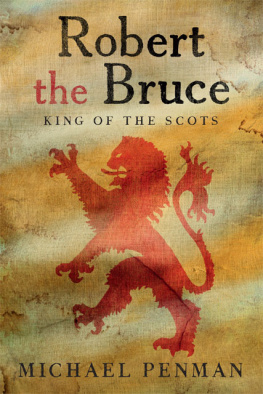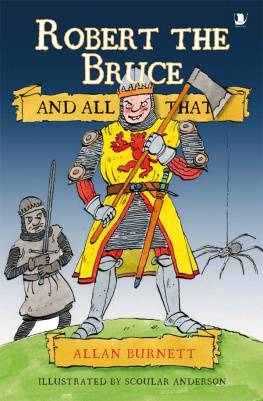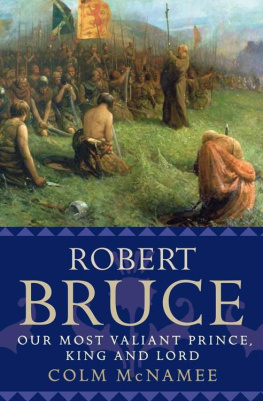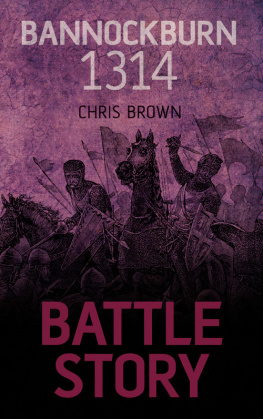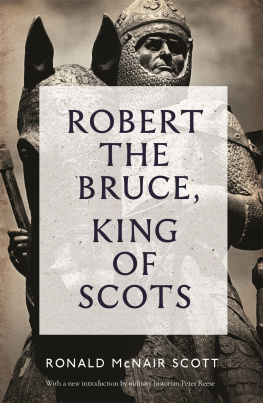

With love,
for Angela and Rosie
Copyright 2014 Michael Penman
The right of Michael Penman to be identified as the author of this work has been asserted by him in accordance with the Copyright, Designs and Patents Act 1988.
All rights reserved. This book may not be reproduced in whole or in part, in any form (beyond that copying permitted by Sections 107 and 108 of the U.S. Copyright Law and except by reviewers for the public press) without written permission from the publishers.
For information about this and other Yale University Press publications, please contact:
U.S. Office:
Europe Office:
Set in Adobe Caslon Pro by IDSUK (DataConnection) Ltd
Printed in Great Britain by TJ International Ltd, Padstow, Cornwall
Library of Congress Cataloging-in-Publication Data
Penman, Michael A.
Robert the Bruce: King of Scots / Michael Penman.
pages cm
Includes bibliographical references and index.
ISBN 978-0-300-14872-5 (cl : alk. paper)
1. Robert I, King of Scots, 12741329. 2. ScotlandHistoryRobert I, 13061329. 3. ScotlandKings and rulersBiography. I. Title.
DA783.4.P46 2014
941.102092dc23
[B]
2014007172
A catalogue record for this book is available from the British Library.
10 9 8 7 6 5 4 3 2 1
Contents
Illustrations and Maps
Plates
27..
Maps
Maps 2, 3 and 4 are extrapolated from P.G.B. McNeill and H.L. Macqueen eds, Atlas of Scottish History to 1707 (Edinburgh 1996), 101, 2025.

1. All Souls church in the lordship of Writtle, Essex: a possible birthplace of Robert Bruce.

2. Edward I presides over his parliament in 1278 with Alexander III in attendance to do homage for his English lands, from a fifteenth-century manuscript.

3. The ruins of Turnberry castle in the Bruce earldom of Carrick, South Ayrshire, facing west to Ireland.

4. A recreation of Portencross castle, North Ayrshire, illustrating the sea-castle and birling or war galley power projected by Turnberry.

5. Ernest William Tristram's recreation (1927) of the lost Edward I wall-painting of Judas Maccabeus from the Painted Chamber of Westminster Palace.

6. Winchester Great Hall and Edward I's Round Table of c.1290. Robert Bruce and his father may have attended the king here as part of the younger Bruce's service in the English royal household.

7. King John (Balliol) of Scotland (129296) does homage to Edward I, for Scotland.

8. Coronation of a King, from an Ordo including the ceremony for Edward II of 1308.

9. Plaque commemorating the site of the Greyfriars in Dumfries where Bruce killed his rival John Comyn of Badenoch on 10 February 1306.

10. The seal of Scone Abbey, illustrating the ceremony of inauguration. Did Robert Bruce attempt a ritual closer to actual coronation on 25 March 1306?

11. Plaque commemorating the tradition of Bruce's exile to the Isle of Rathlin off northern Ireland over the winter of 13067.
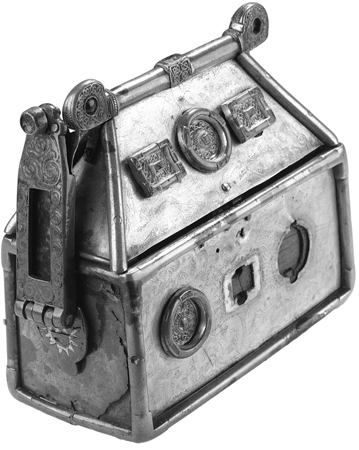
12. Cults and relics venerated by Robert I.
a) The Breccbennach of St Columba, held by relic-keepers at Arbroath Abbey.
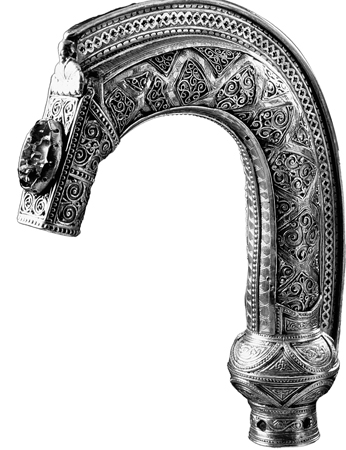
b) The crozier of St Fillan who aided Bruce in both 1306 and 1314.
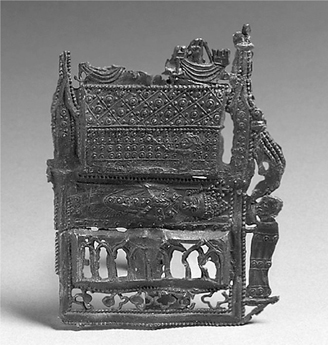
c) A pilgrim badge depicting the shrine of St Thomas Becket at Canterbury.
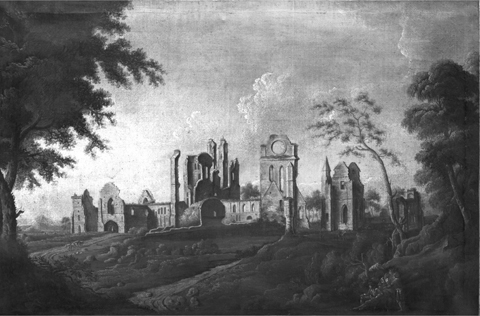
13. a) The abbey of Arbroath, Angus, dedicated to St Thomas. Robert I established his chancery here and paid for a tomb effigy for its founder, King William I (r.11651214). b) abbey seal.
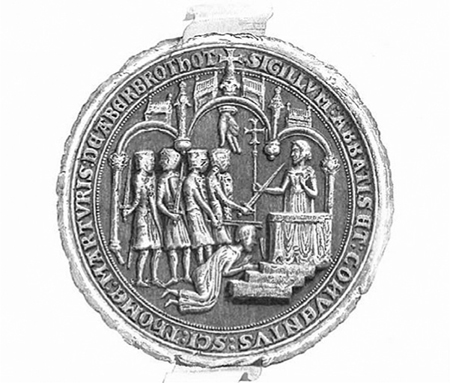

14. Robert I slays Henry de Bohun at the battle of Bannockburn, 23 June 1314, before Stirling. From a fifteenth-century manuscript of Abbot Walter Bower of Inchcolm's Scotichronicon. Note the steep banks of the burn rendered at the foot of the folio.
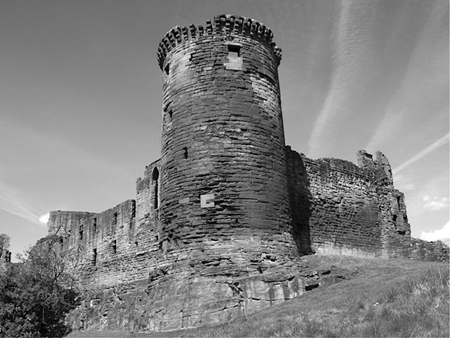
15. The castle of Bothwell, Lanarkshire, surrendered to Robert I by Walter Fitz Gilbert in the wake of Bannockburn.
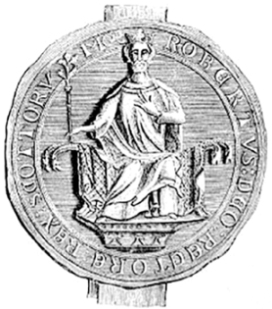
16. Images from Robert I's second great seal.
a) The king dispensing justice and patronage.

b) The king in war.

Next page
